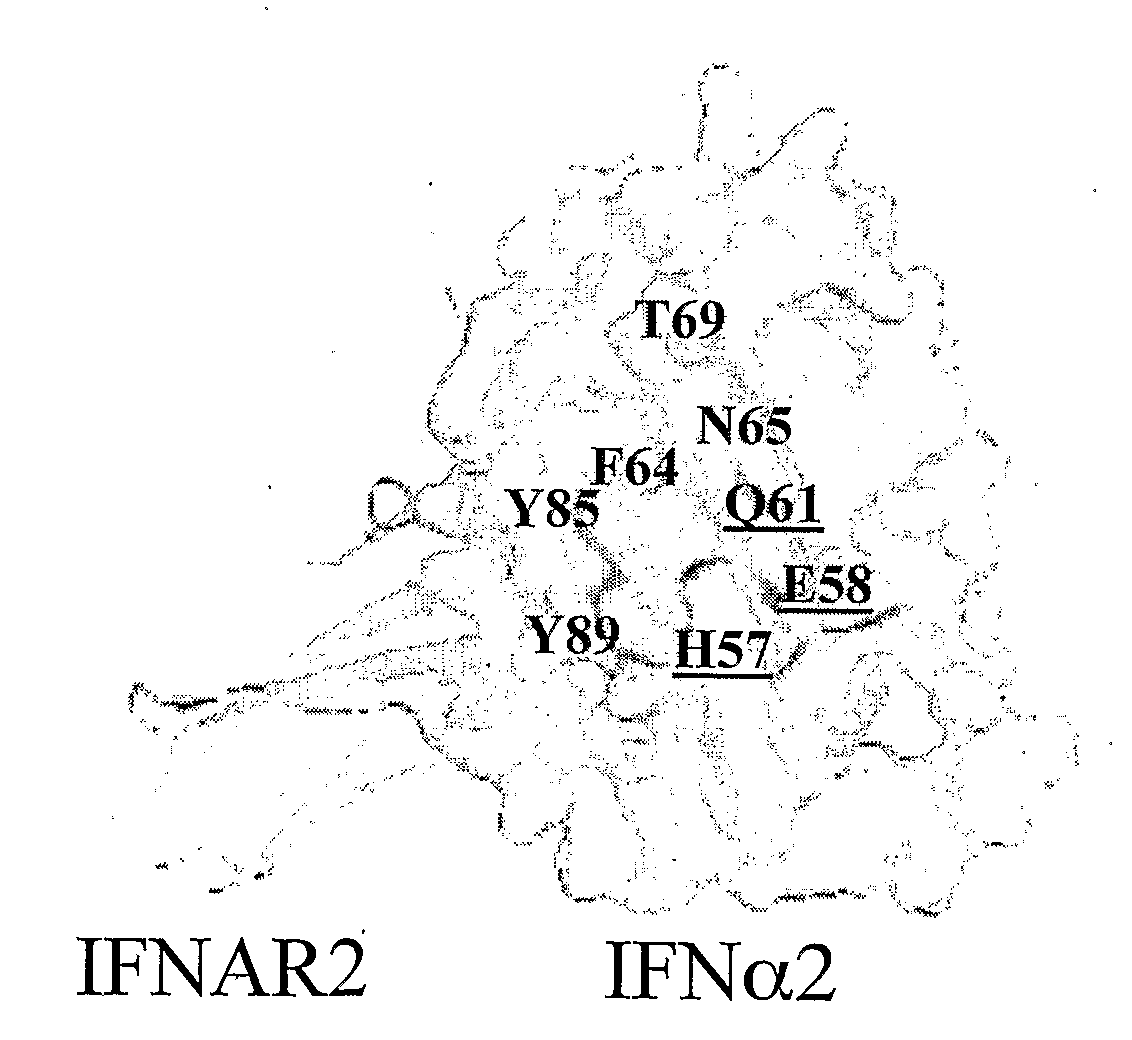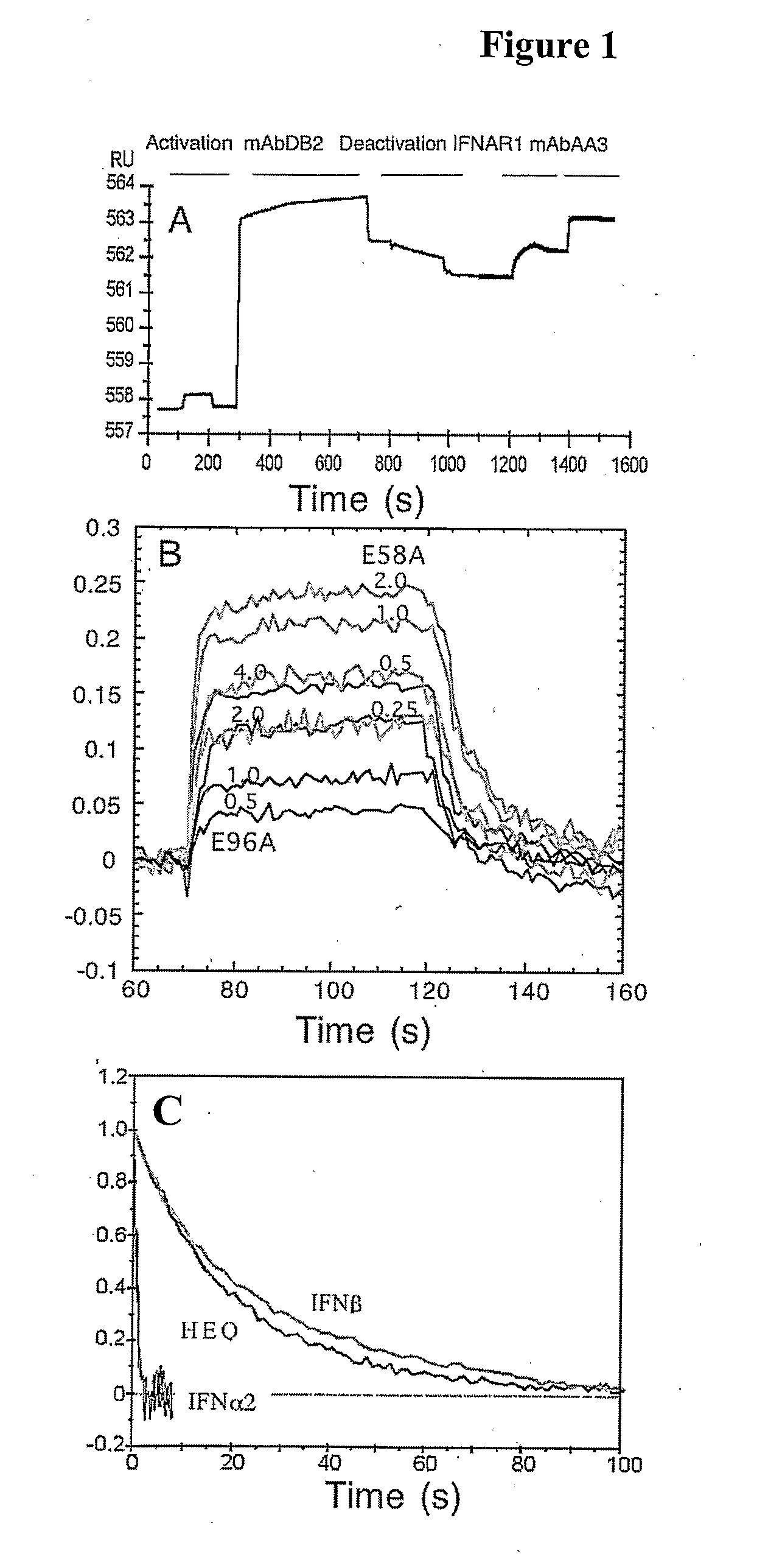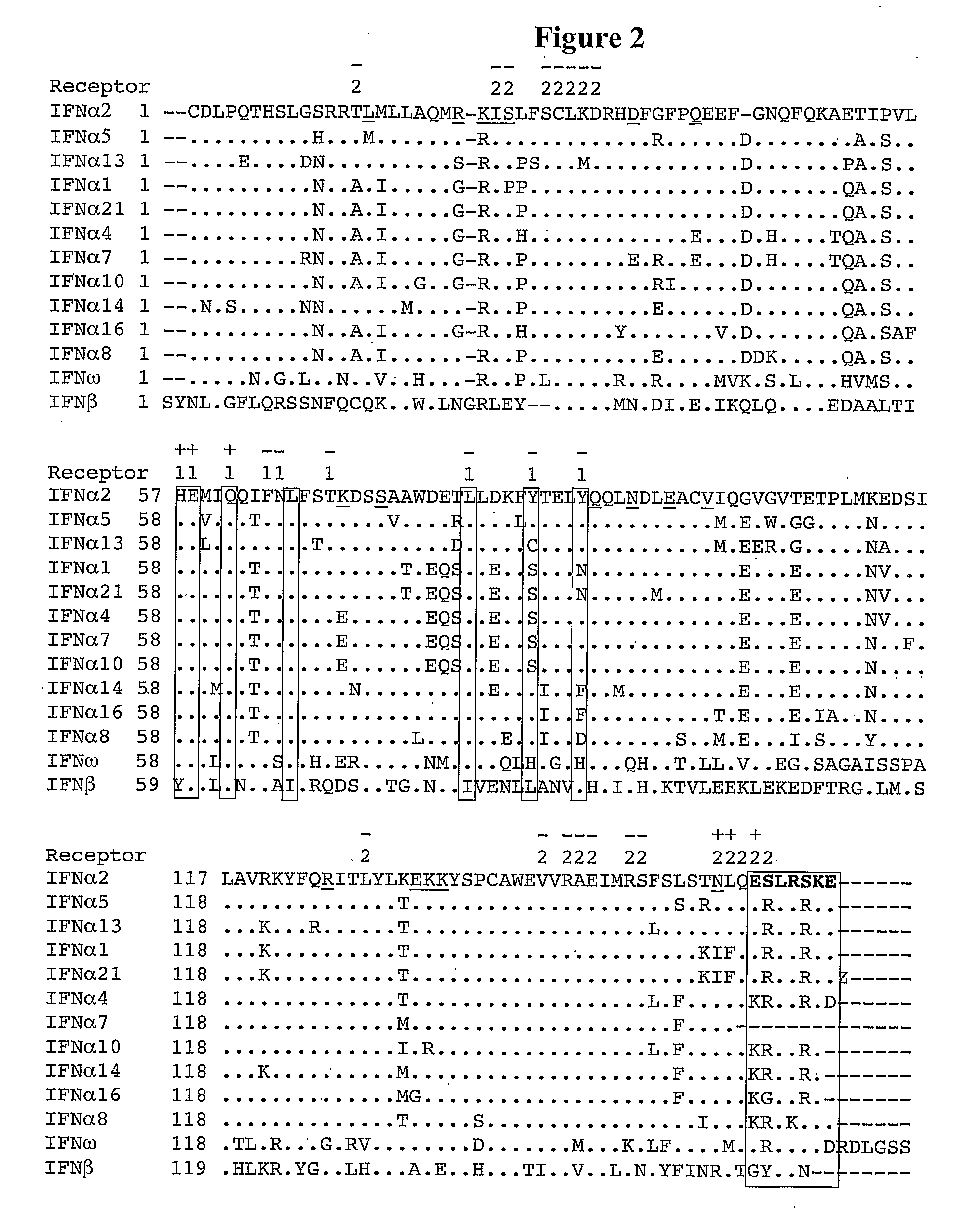Recombinant Interferon 2alpha (Infalpha2) Mutants
a technology of recombinant interferon and mutants, applied in the field of recombinant interferon 2 (ifn2) mutants, can solve the problems of ineffective therapeutic alternatives, 40% to 50% of patients fail therapy, inconvenient treatment, etc., and achieves important therapeutic utility and improved specificity as agonists or antagonists.
- Summary
- Abstract
- Description
- Claims
- Application Information
AI Technical Summary
Benefits of technology
Problems solved by technology
Method used
Image
Examples
example 1
Characterization of the IFNα2-IFNAR1-EC Interaction using an Optical Biosensor System
[0142]The interaction of IFNAR1-EC to IFNα2 was investigated by label-free solid phase detection using RIfS. This technology requires the immobilization on the chip surface of one of the interacting compounds. The method successfully employed previously for IFNAR2-EC was used, where the receptor is immobilized using mAbs which are themselves immobilized to the surface via amino-coupling (Piehler, J. and Schreiber, G. 2001, Anal. Biochem. 289, 173-186). The non-neutralizing anti-IFNAR1-EC mAb DB2 was coupled to the amino-functionalized dextran AMD 500 surface via its exposed amino groups. The IFNAR1-EC was affinity-captured to the mAb surface followed by cross-linklng with a second mAb AA3. The process as followed in real time RIFS is shown in FIG. 1A. The binding activity of IFNAR1-EC bound to the RIfS surface was determined by injecting IFNα2 protein at concentrations ranging from 0.12 to 4 μM. Due...
example 2
Mapping the Binding Site of IFNα2 for IFNAR1
[0143]To locate the binding site of IFNAR1 on IFNα2, an Ala scan of most residues located on the B and C helices was performed (FIGS. 2 and 3). All together, 21 single point mutations were produced, and their binding affinity towards IFNAR2 and IFNAR1 were measured by RIFS or ProteON. As the mutations are located on the opposite surface of the IFNAR2 binding site on IFNα2, the binding affinities of the different mutant proteins towards IFNAR2 were very similar to that of wild-type IFNα2 (Table 1). This is assuring, as it validates the proper folding of all the mutant proteins, and their active concentrations. While binding of IFNα2 with IFNαR2-EC provides a clear kinetic signal, binding towards IFNAR1-EC is much weaker and has to be analyzed according to the refractive unit (RU) signal of the steady state affinity, by varying the concentration of the ligand. In this case, the knowledge of the correct and precise concentrations of all the I...
example 3
Antiproliferative and Antiviral Activity of IFNα2 Mutants
[0144]The antiviral activity was assayed as the inhibition of the cytopathic effect of vesicular stomatitis virus (VSV) on WISH cells (human epithelial cell line of amniotic origin). The antiproliferative activity was determined both on WISH cells and on Daudi cells, as the 50% inhibition of cell growth (as described in Methods). FIG. 4A shows the outcome of applying a serial dilution of concentrations of IFNα2 and IFNβ for 72 hr on the intensity exhibited by WISH cells after staining, from which the concentration of interferon promoting an antiproliferative effect can be deduced. The wells were scanned for densitometry analysis, and the results were plotted versus the protein-concentration applied (FIG. 4B). The same was done to determine the antiviral potency of interferons on WISH cells (FIG. 4C). The 50% activity point as well as the rate of change in activity (slope) were deduced from an IFN dose response curve, Eq. 1.
y=A...
PUM
| Property | Measurement | Unit |
|---|---|---|
| Tm | aaaaa | aaaaa |
| Tm | aaaaa | aaaaa |
| Tm | aaaaa | aaaaa |
Abstract
Description
Claims
Application Information
 Login to View More
Login to View More - R&D
- Intellectual Property
- Life Sciences
- Materials
- Tech Scout
- Unparalleled Data Quality
- Higher Quality Content
- 60% Fewer Hallucinations
Browse by: Latest US Patents, China's latest patents, Technical Efficacy Thesaurus, Application Domain, Technology Topic, Popular Technical Reports.
© 2025 PatSnap. All rights reserved.Legal|Privacy policy|Modern Slavery Act Transparency Statement|Sitemap|About US| Contact US: help@patsnap.com



